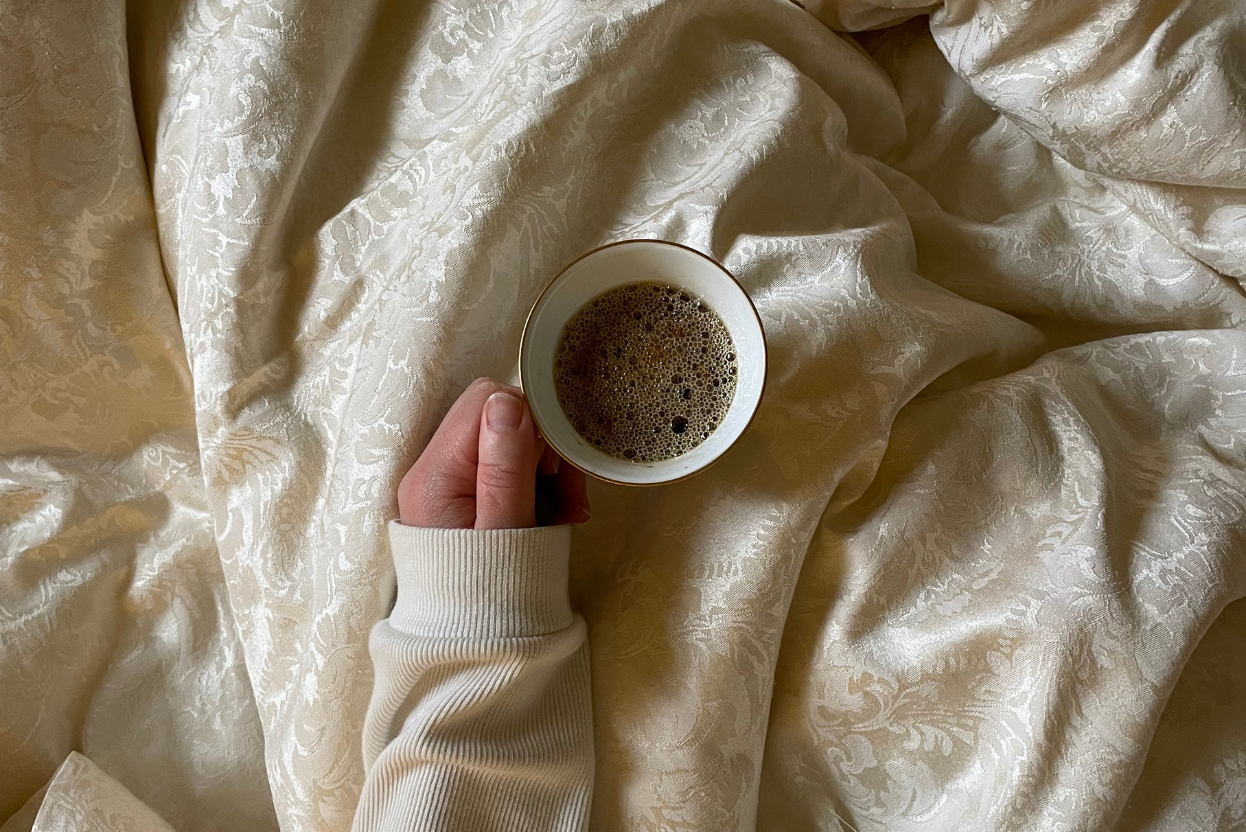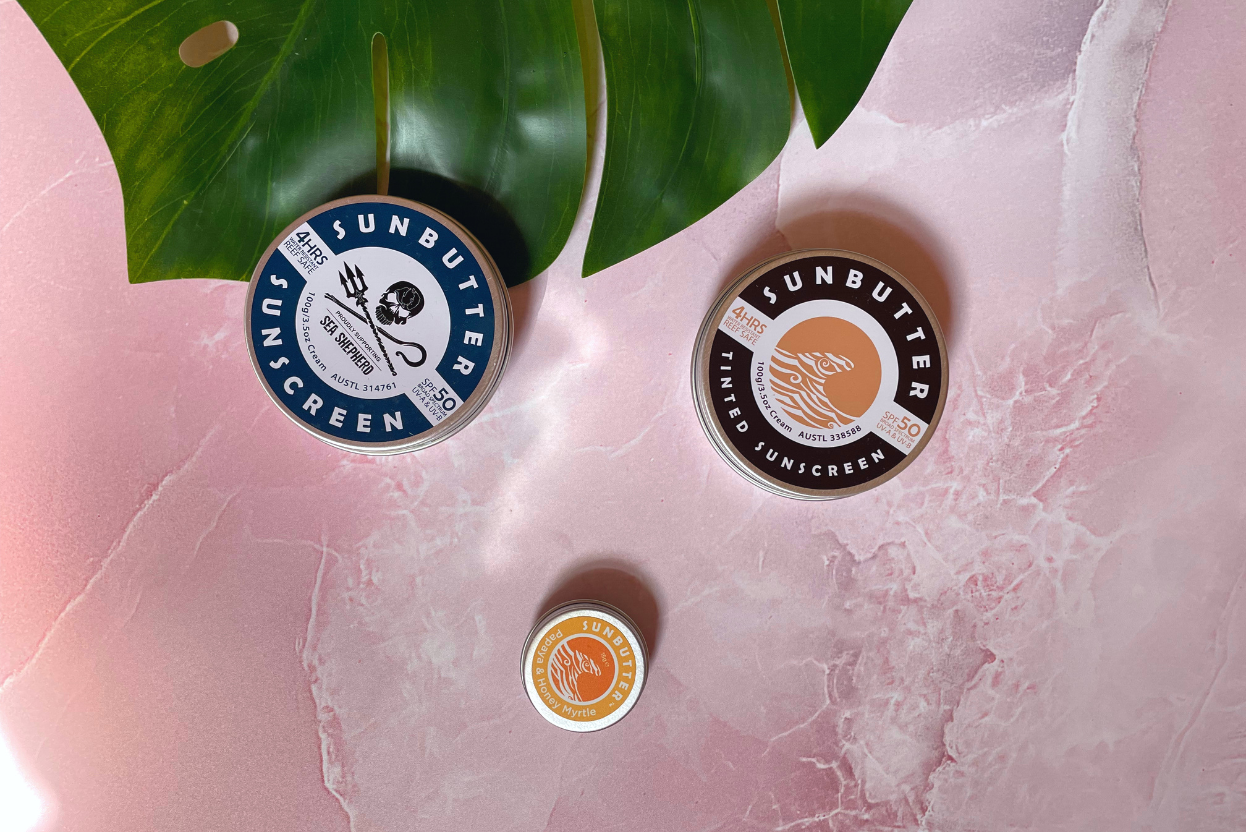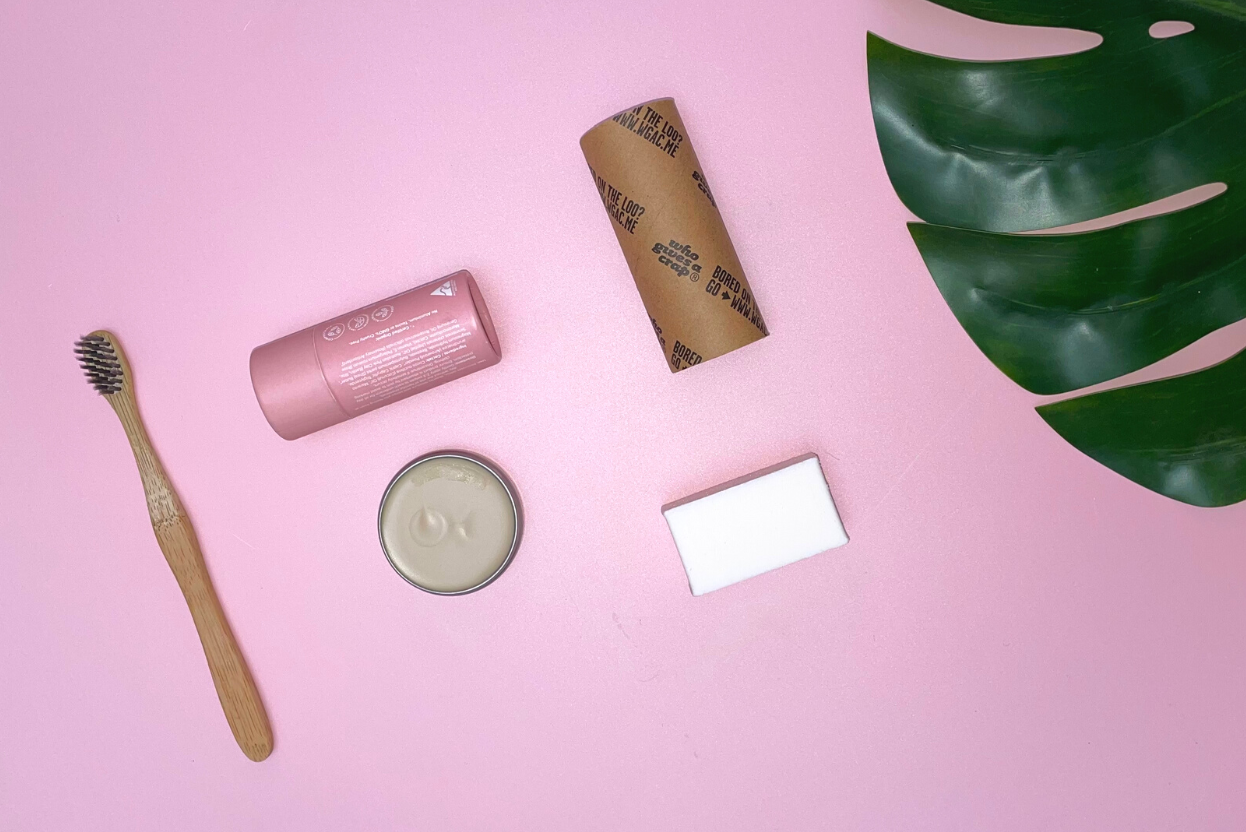Leanne Tibben is my kind of woman. She’s a creative little cookie, an entrepreneur, a multi-tasking wonder woman, and a sustainability advocate. The latter is what drew me to her business, Burnt Country, and I’ve fallen in love with it. Leanne is one of those people who see the bigger picture, and while Burnt Country may be a small little hand-dying business, her impact is big. I recently worked with Leanne to naturally dye an old off-white linen bed set, and the results are nothing short of beautiful.
Meet Leanne, another good person doing good things…
What was life like before launching Burnt Country?
Before Burnt Country, I was a registered nurse, a new mother, and I’ve been married to my childhood sweetheart since I was 20! A few years after we got married, we sold everything we had, bought a Jeep and a caravan, and travelled Australia. It was the best time of our lives.
What is Burnt Country all about?
I founded Burnt Country out of a desire to create unique pieces for the home, reflecting the raw beauty of Australia. I fell into botanical dyeing accidentally one day a few years ago after reading about an incredible dusty pink colour that could be drawn out of an avocado skin. As a fan of a good guacamole myself, I had to try it out! I fell in love with the concept of making my own colours out of plants and vegetables and doing great things with them! For me, plants are incredible, and I love exploring their potential.
Why is botanical dyeing better than chemical dyeing?
I get great satisfaction out of creating a beautiful natural dye out of food scraps that would have otherwise been discarded. I collect my avocado seeds from a few local cafes and my onion skins from local fruit and veggie stores. There are no chemicals in the process at all, and I’m keeping my carbon footprint light! Botanical dying is an excellent alternative to fast fashion; the time and patience it requires has forced me to slow down and appreciate the beauty and wonder held within plants and also realise the significance of a carefully made product. When we genuinely love and understand something, we are much more likely to enjoy it for years to come rather than quickly losing interest and discarding it.
What does a week in your shoes look like?
A week in my shoes varies greatly! Natural dyeing is such a slow process, so I’ll often work on just one small step each week, fortnight or month. For example, I might spend a week pre-washing and then soy mordanting a batch of fabric in preparation for dyeing. Once the fabric is dipped and dried two or three times, it needs to sit for a few weeks to allow the soy fibres to actually bind to the fabric. There’s no rushing it if you want good results with natural dyeing. I also handle all the business-related activities, telling my story through social media and emails. I am always dreaming up new designs and ideas and playing with different natural dyes on any given day.
Why are you passionate about sustainability and ethics?
The planet and all who dwell on it are important, it’s simple. I continually strive to support our incredible world and all those who inhabit it. I choose to create my own colours from plant and vegetable waste, I make small batches to limit waste, and I choose natural fibres every time – because I care. I believe in the importance of ‘using what's in my hand’ and doing my bit, and I believe we can all do this in our own way.
Why do you love the Australian outback and why do you feel so connected to nature?
I grew up in the bush, and I now live by the sea, so I have always been in awe of Australia's incredible landscape; it’s the constant inspiration behind my designs. Nature is the most beautiful reflection of creation, and there is nowhere else I feel more inspired. I am endlessly amazed at the wonders of plants, and how complex, impressive and beautiful they are. I love delving into their therapeutic properties and finding out how they can assist in remedying our health too.
What fruits and vegetables make the best dyes?
The possibilities are endless when it comes to natural dyeing, and fruits and vegetables are just a start! Many fruits and vegetables produce bright colours initially but then fade or change significantly when exposed to heat, changes in pH, various metals or sunlight. There’s a bit of a science to it! There’s no denying I love the dusty pink and salmon surprise of mixing a green avocado skin with a brown avocado seed. The seeds are high in pectin which fixes the colour naturally; it’s a win-win. Interestingly, lemon is really great for shifting natural tones as it is very acidic and natural colours are sensitive to any changes in pH.
Your Roundie Cushions are so popular! What’s involved in the making process?
All of my Roundies are either dyed or painted by myself with my own plant-based colours. The first step is to make the actual dye, and I often start this months in advance. It’s a process of simmering the various plants or vegetables, (usually avocado seeds or onion skins) for an extended period of time, allowing the colour to seep out. I then strain all the bits out and reduce the dye for a deeper colour. If I am turning this into a natural paint, I reduce it further to get a very concentrated dye and then add a natural thickener. Next up, I prep the fabric, which involves pre-washing, treating (multiple times), and leaving it to rest for a few weeks. This allows the natural pigments to bind to the fabric, which is vital for colour retention as I don’t use any chemical fixatives. Without this step of the process, most of the colour would leak out during the first wash. To dye the fabric, I immerse it in a large dye bath and gently simmer for many hours. Once it’s washed and dried, I sometimes repeat the process for a deeper colour. To paint the fabric, I apply my paints, allow them to dry and then steam set the colour before washing it out. Once all my fabric is ready, I drop it into my seamstress in Sydney who sews everything for me. Then I pop the inserts in, and they are ready! In short, it’s a long process which typically takes three to six months, and it’s definitely a labour of love.
When you’re not dying and creating, what do you get up to?
Being a wife, mum and friend take up the majority of my time and focus, and creating healthy rhythms for my family is important to me. This means meal planning, food prepping, cooking, working in the garden, crafting together, rides to the beach, getting to know our neighbours, supporting other people, and normal life stuff. I am obsessed with my growing collection of indoor plants, and looking after them and seeing them thrive brings me so much joy! I’ve also been delving further into the therapeutic benefits of plants and have been using essential oils to rid toxins and excess chemicals from my home; it’s been a wonderfully empowering and simple process. I’m mad for DIY projects and just love creating my own custom cleaning and skincare products. It’s given me a whole new appreciation for plants, and it’s been saving me money too. Win-win!
To read more about natural dying or to shop Leanne’s famous Roundies, head to burntcountry.com.au, and as always, support your locals.
The Fashion Advocate x






